In my first article, “Mastering Your Press, Part I,” I addressed specific ways to test your press and find weak areas by analyzing how your body responds to pressing a heavy kettlebell. Paying attention to where your press breaks down when things get heavy is an important aspect of mastering your press. Although there are exceptions, it is likely you experienced the most common pressing mistakes that typically occur when testing your limits. In this article, I will go through each one and discuss the appropriate drills to address them.
Common Pressing Mistakes
Allowing the kettlebell to slip out of groove
I assume you have practiced your press enough to have confidence with your perfect groove and are able to maintain it at least with light and medium weights. One reason you may lose your groove with heavy weights is an improper positioning of the handle in the palm. During the press, the kettlebell challenges you to an arm-wrestling match. Improper positioning allows the kettlebell to win by enabling the displaced weight from the handle to bring your wrist into extension. If this happens, you lose tension and control of the kettlebell and the game is over.
Your wrist will always fight against the weight of the kettlebell from setup to lockout. Before you press, set your wrist and tighten your forearm muscles just as you would do for an arm-wrestling challenge. You must also shorten the leverage that the handle has against your wrist. This is done by sliding the handle as deeply as possible into the heel of your palm. Then crush grip the handle and keep fighting the weight of the kettlebell by forcing your wrist into flexion throughout the entire press. The stacked press is a great press variation that teaches you how to do this.
Failing to tighten the entire body, especially the unloaded side
When pressing with one arm, you should slightly shift your hips towards the loaded side and position your body to direct the weight of the kettlebell straight to the ground through your stacked bones and tensed muscles. The body of the kettlebell is stacked on top of your elbow, your elbow on top of your hip, and your hip on top of your foot. All the muscles of your torso and lower limbs should be tensed, including your lats, abs, spinal erectors, glutes, and quads. This is something that happens almost naturally, at least on the loaded side. However, things are different for the unloaded side, especially with a heavy kettlebell.
When pressing a heavy weight, your focus often shifts towards the loaded side and you may fail to keep proper tension on the other. This lack of tension affects not only quad, glute, abs, and lat engagement, but also your grip. This may cause you to raise your unloaded heel off the floor or your knees to bend. You may also overarch your lumbar spine or lean excessively sideways. If this occurs, it will not only make your attempt illegal and unsafe, but also weaken your press. The lack of tension in the grip of your unloaded fist doesn’t allow you to take full advantage of the cross-limb transfer phenomenon that makes one side stronger by tensing the other. The banded-pull press is a great drill that teaches you how to properly tense your unloaded side.
Failing the perfect timing
I have already covered the importance of perfect timing in your press and what happens when you fail to achieve it. The double trigger drill will help you perfectly synchronize your pressing sequence.
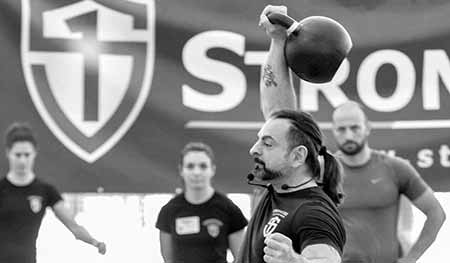
Drills for a Stronger Press
The Stacked Press
Pick two kettlebells with a combined weight that’s equal to a kettlebell you can press 7-10 times with perfect form. Initially, start with kettlebells that differ in weight. For example, if 28kg is the kettlebell you can press for your 7-10RM, pick a 16kg and a 12kg or a 20kg and an 8kg. Line up the kettlebells on the ground in front of you with the heavier one closer to your pressing side.
Assume the setup position of a dead clean and spear the pressing hand through the handle of the heavier kettlebell. Dig your hand deep into the handle, making sure that it ends up in the very heel of your palm. Use your free hand to slide the handle of the lighter kettlebell on top of the other until the two handles make contact.
Now bring the wrist of the loaded side into flexion and crush grip both handles so that the bodies of the kettlebells are glued together. Place your free hand on top of the other and cheat clean both kettlebells into the rack position. You cannot afford to lose tension in your grip during the clean because that would cause the kettlebells to lose their perfect stacking. From the rack, tense your body and press the stacked kettlebells to an overhead lockout. You will immediately realize that the only way to complete the press is to turn the two kettlebells into one by keeping a super tight grip and fighting against wrist extension. Once you have gained confidence with this variation you may experiment with heavier weights and different combinations of sizes that add up to the same weight. You will soon discover that pressing two stacked kettlebells of the same size is the most challenging variation.
The stacked press is very effective for perfecting your technique. It teaches you to crush grip the handle and arm-wrestle the kettlebell by giving you no other option. If you fail to do so, even for a fraction of second, things will fall apart immediately. After completing this drill, the goal is to apply the lessons you’ve learned to your regular press. There are several strategies that allow you to do this. The easiest one is including the stacked press as part of your warm-up/ramp-up before your regular press practice. It will awaken your grip muscles and remind you of proper grip and wrist position. My favorite application is making the stacked press part of my regular press sessions by including it in my training volume.
For example, let’s say that your session calls for a 32kg kettlebell and three ladders of 2, 3, and 5 reps. You may decide to use the stacked press for your three sets of doubles. You could also vary the kettlebell weight combination from set to set. For example, you could use 24kg+8kg for the first double, 16kg+16kg for the second, and 20kg+12kg for the third. Another benefit of the stacked press is the ability to create in-between weights you might not normally have. For instance, a lady who needs an 18kg kettlebell for her practice can stack an 8kg kettlebell on top of a 10kg kettlebell.
The Banded-Pull Press
Loop a rubber exercise band around a pullup bar. Select a resistance that is challenging enough to strongly engage your lats and midsection without requiring maximal effort when pulling with one arm. In most cases a black (10kg/20lb) or a purple (15kg/30lb) band will do the job. Stand under the pullup bar with a 7-10RM kettlebell in front of you. Clean the kettlebell to rack position and place your unloaded shoulder under the attached band. Reach up high with your unloaded hand and grasp the band. Shift your hips slightly towards the loaded side and set your grip and body for pressing. Grip the band tightly and connect your unloaded shoulder to your torso through an anti-shrug action. You should already feel your lats, abs, and side muscles engaging. Now stretch the band by pulling your unloaded elbow towards your ribcage until you feel your lats, side muscles, and abs firing maximally. Breathe into your belly, brace your abs, and tense your body fully while you press the kettlebell to lockout. Stretch the band with max effort throughout the press, but keep your mind focused on the loaded side. Your press should feel much lighter than usual. If you want to learn more about why the kettlebell suddenly feels lighter, reach out to a StrongFirst Certified Bodyweight Instructor or visit a StrongFirst Accredited Gym and ask them about the principle of dominanta.
Rerack the kettlebell and release the tension of the band. Repeat for several reps but stop before your technique is compromised. Imprint in your mind what you felt in your grip, lats, side muscles, and abs as you were pulling the band during the press. Set the kettlebell down, breathe, shake off the tension, and clean the kettlebell again. Do not grasp the band this time but place your free arm in the same position as when you strongly pulled down on it. Shift your hips towards the loaded side, set your grip, breathe, brace, tense your body, and press again. As you press, crush grip your unloaded fist and isometrically pull down an imaginary band, generating the same tension and feeling as before. Enjoy the results.
If you executed the drill correctly, the kettlebell will feel as light as it did when you were pulling the actual band. Get a heavier kettlebell and press again continuing to pull the imaginary band. If you realize that at some point you are losing tightness on the unloaded side revisit the band. The banded-pull press is an effective awareness drill. It teaches you how to generate tension on the unloaded side and direct it towards the loaded one. I like to use this drill for movement prep before regular pressing practice or to slip it in between sets when a reminder for tension is needed.
The Double Trigger
Stand with a 7-10RM kettlebell in front of you. Clean the kettlebell to rack position and prepare yourself to press. Now imagine that in your unloaded hand you are holding a trigger that is connected to all your muscles responsible for generating a solid pressing foundation. Your grip and the muscles of your feet, quads, glutes, abs, and lats are all wired to the trigger. Imagine that as you crush the grip of your free hand all these muscles are firing in unison and turning your body into one solid piece of rock.
Now picture that the handle of the kettlebell you are about to press has a built-in trigger connected to your pressing muscles. Your grip, forearm, arm muscles, and delts are all wired to the kettlebell’s trigger. As you crush grip the handle of the kettlebell all these muscles fire and your cannon shoots.
By crush gripping your free hand, you activate the first trigger and your body becomes one piece. A fraction of a second later, crush gripping the handle of the kettlebell activates the second trigger on top of the total-body tension generated by the first. The goal is to keep both triggers engaged until you reach overhead lockout. If you do this, your timing will be perfect and your press will feel stronger than ever before. Apply these imaginary triggers every time you press no matter how light or heavy the weight. It will allow you to achieve and maintain perfect timing in your press. Eventually, tensing your whole body in unison right before you press will become automatic and your press will be even stronger.
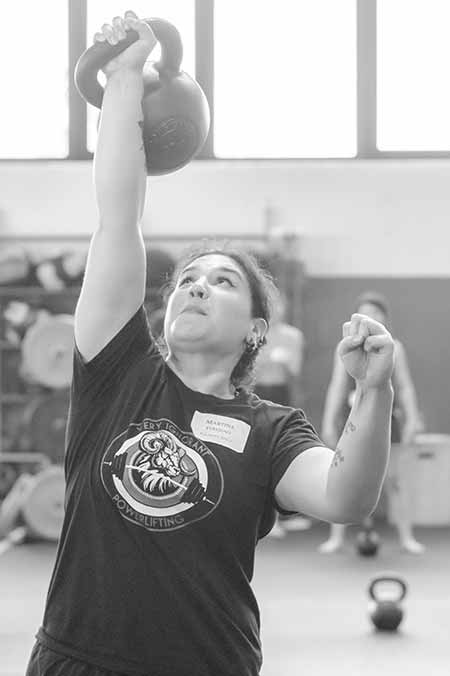
Get to Work
Now that you’ve learned how to use the heavy press test to find your weak links and drills that help you master your press, it’s time to get to work. Do the test. Analyze your technique and your body’s ability to maintain integrity under a heavy load. If you find flaws in your press, be humble enough to revisit and practice the basics of tension and strength. If your pressing foundation is strong and you are ready for the advanced drills above, pick the ones that are appropriate for you. Include these drills wisely into your practice and be prepared to see a great improvement in your press. If you feel that these drills are not needed to improve your press, put them in your instructor toolbox and use them as you train your students.
Pressing power to you!
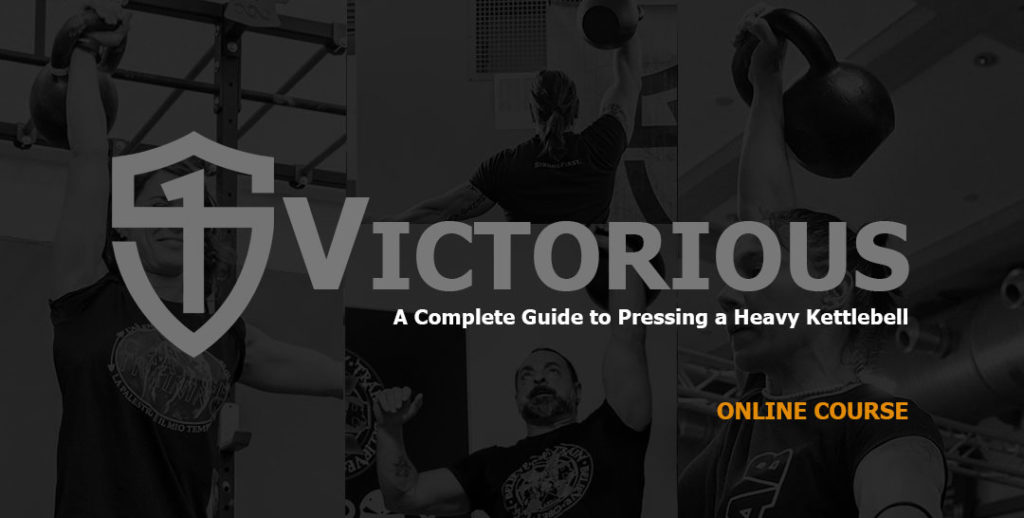

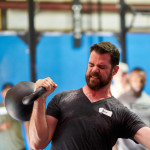
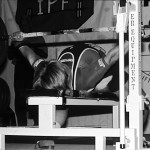
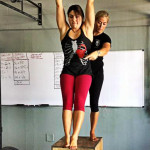


Wow… I have never had such an immediate fix to my technique as I have with your “double trigger” recommendation. It was the missing link for my non-dominate arm. I was basically faking my way with my stronger right arm, but my left press was ugly and weak.
The fact was that while I know better, I didn’t zip up all the non pressing body parts and just jumped to the “second” trigger… shooting that canon out of a canoe.
It took about a dozen presses with the double trigger technique and my left press looked as strong as my right press. The bell just goes up with seemingly less effort.
Thank you so much for doing this series.
Albert,
I am so happy to hear that the drill worked so well for you and I thank you so much for sharing your feedback, Sir. You have inspired me to write more articles along the lines fo this one in the future.
Thank you again!
8 weeks plus 8 weeks.
Fabio,
Thanks for the article, I’m definitely going to give those drills a try as I’m struggling with my press on the stronger side and I can already see a couple of issues I realized after reading this.
As for the program itself, from the Victorious course – can it be also run with double bells? And what’s the duration of it?
Marcin,
Thank you for giving a shot to the drills, your feedback will be very much appreciated.
There are two 8 week plans in the course, and they can be definitely run also with double bells. The course itself covers the technique for the one arm version of the press, though.
I hope this helps.